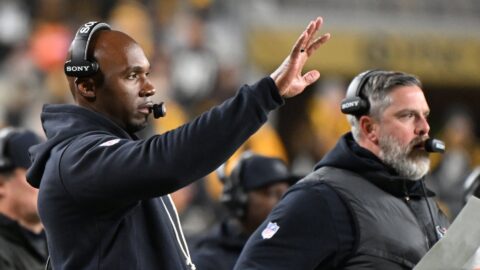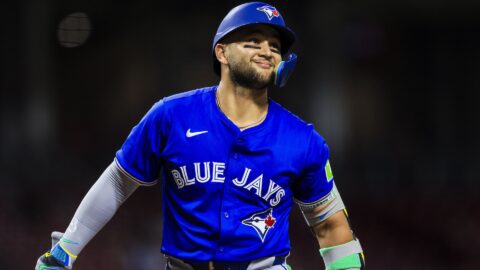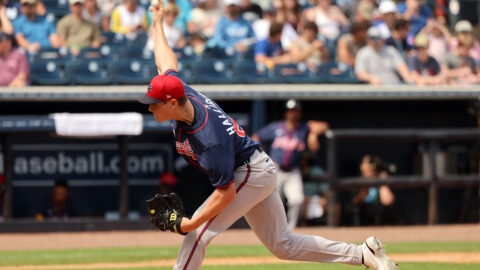Editor’s note: Each day this week, NESN.com Red Sox reporter Tony Lee will examine Jacoby Ellsbury’s journey to the majors. On Thursday, Lee explained how Ellsbury overcame trade rumors and constant adjustments to cement his place in the Red Sox organization.
Jacoby Ellsbury began a game in Kauffman Stadium last April 11 by offering a perfect example of how to bat leadoff. He singled, stole second base and scored the game’s first run. One inning later, Ellsbury doubled and scored again, raising his early-season average to .370.
Several innings later, he was in left field as Red Sox closer Jonathan Papelbon came on to get the last three outs of an 8-6 win. The fastest player in team history was well enjoying a satisfying start to what figured to be a fantastic year.
We all know what came next. Never before has a foul pop hit in Kansas City in early April done so much damage to one player, as Ellsbury pursued that flare off the bat of Scott Podsednik, only to plow into hard-charging third baseman Adrian Beltre down the line. Ribs were broken and Boston’s leadoff hitter would play in just 12 more games all season.
Players often lose all or most of a year due to injury. It’s not often that those lost years come to a player who is entering his prime. It’s even less common to see a player in his prime unable to make it back, despite repeated attempts. It is rarer still for that player, otherwise known as an all-out athlete on the field, to be called into question by media, fans and teammates for having a supposed lack of drive or an inability to play hurt.
Through it all, Ellsbury wrestled with a dilemma — do whatever he could to get back on the field and stifle his critics, or listen to what his body was telling him, a body with an injury much worse than originally thought.
Pat Casey, Ellsbury’s coach for his three seasons at Oregon State, caught up with his former pupil in the middle of the summer, when the questions were swirling around Ellsbury and his commitment to the team. Casey could see how hurt Ellsbury was, and that had nothing to do with the ribs. Ellsbury told him he wanted to push through whatever pain he had for the good of the team, but physically he could not.
Yet, every day offered more ammunition for those who said Ellsbury lacked toughness.
“It bothered him that that was out there,” Casey said. “Is the guy injured too long? Is he prone to take too long to come back? Is he carrying this on a little further? That killed him. … There was obviously something wrong for this guy not to play, and he knew it, and those are things that are tough on professional athletes because they’re so magnified when people want to win and they want you to play.
“Deep down, you got a guy that has pretty much gone through his career without an injury, would pretty much play whenever he could and is in this position where he really couldn’t. I think it hurt him personally.”
In reality, Ellsbury had multiple broken ribs that were detected long after initial tests. When he returned in May, he lasted just three games before the pain became too much to bear (Ellsbury told Casey he could hardly breathe the morning after one of those games). In August, he made it through nine games before suffering another rib injury in a collision in Texas and ending his season right there.
Not that the incident in Texas was a good one to have, but it did provide closure. Ellsbury’s season was painful, in more ways than one. After having some time away, he could finally take stock of what he was dealing with, map out an offseason plan that would allow it to heal completely and set his sights on rejuvenating his career.
“You can look at it like it’s a nightmare, or you can look at it like it’ll make you stronger. You can learn from it,” Ellsbury said at the end of the season. “I see it from both sides now. You can’t control it, so you might as well take a positive out of it. Going through it, you know, it’s definitely not fun. It’s not fun watching, knowing you could have an impact on the game and you’re not playing. It’s nice to know now that once I let it heal, it shouldn’t be an issue.”
That healing process continued this fall and winter at the Athletes Performance Institute in Arizona. It will carry on through spring training in Fort Myers, Fla. And it will be complete when Ellsbury rips a single, steals a base and scores a run, showing us once again what leadoff hitter looks like.



